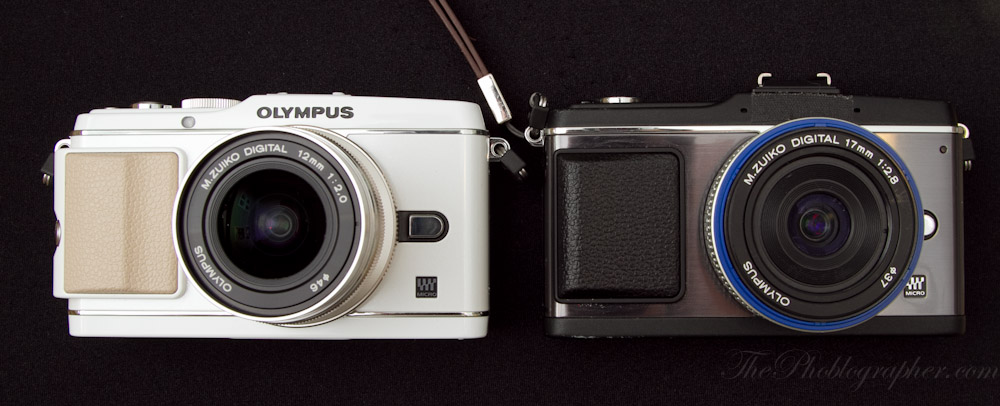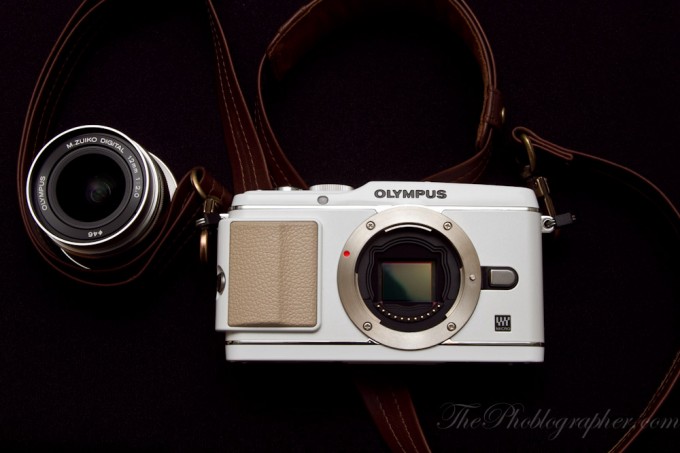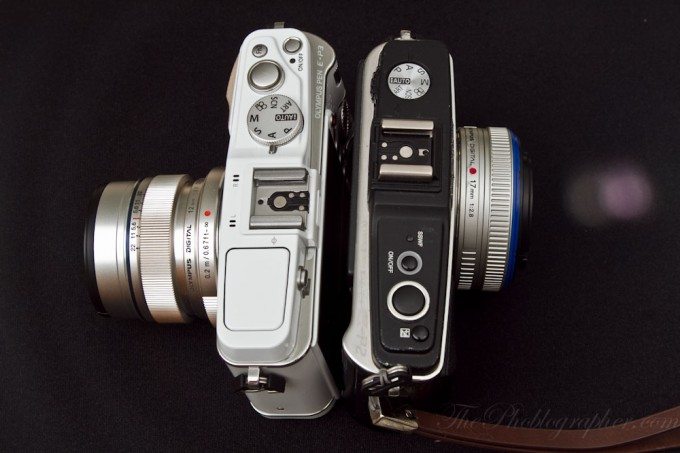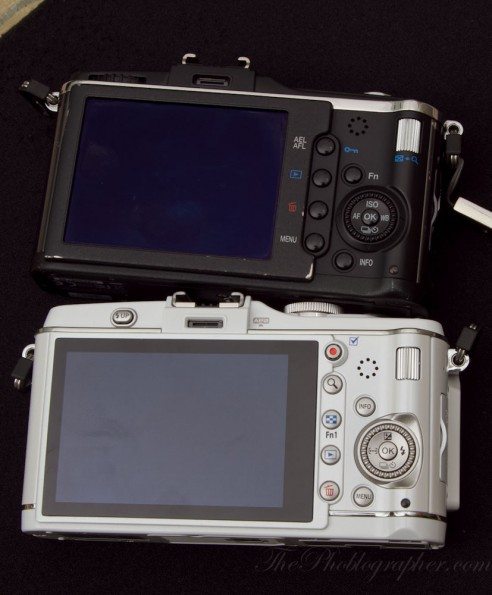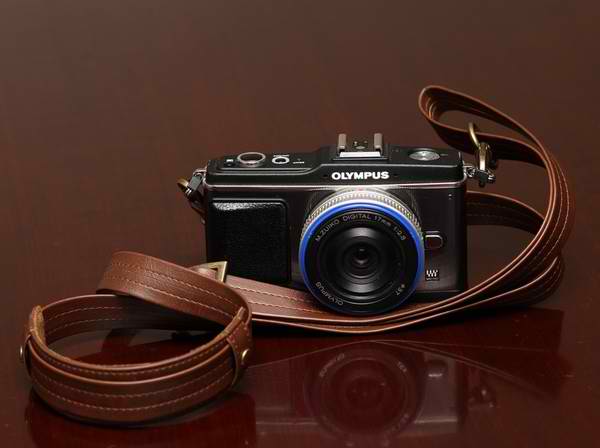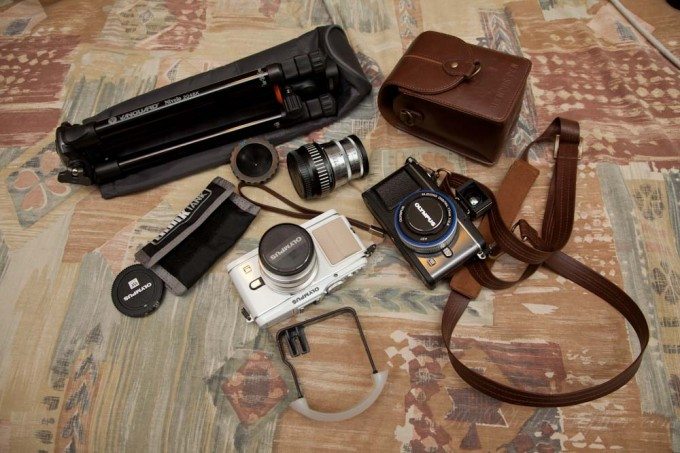Last Updated on 08/28/2011 by Chris Gampat
As a proud owner of the Olympus EP-2 (E-P2, or EP2) and after having the Olympus EP-3 (also called the Olympus Pen, EP3, and E-P3) in my hands for a while, one wonders if it’s worth the upgrade. Sure, the Olympus EP-3 does much to make it stand out from its predecessor. However, some features may not be notable enough to current EP-2 owners. So is it really worth the upgrade?
Differences
The upgrades in the EP-3 from the EP-2 are as follows:
– Touchscreen and new interface/menu
– ISO range up to 12,800
– Interchangeable grips
– Pop-up flash with wireless flash control
– Top dial moved to a more compromising location
– FN1 and FN2 buttons
– Magnify button
– Direct record video button
– New art filter tweaks (pin hole effect is just one of them)
– Eye-fi Compatible
– New accessory port that can take all the new gadgets that Olympus has previously announced
– New FAST AF system that works with the MSC lenses, sensor and processor to deliver quicker AF performance with more accuracy.
– Dual core TruPIC IV engine
Ergonomics
The Olympus EP-3 feels lighter than the EP-2. As far as how they feel in the hand, they’re both very good. However, my EP-2 feels like it can take more of a beating than the EP-3 can. In fact, it feels more like the original Pen film camera. That’s not to say that the EP-3 feels dainty though.
I much prefer the original mode dial on the EP-2 for security reasons when you’re shooting in rough conditions.
Both the EP-2 and EP-3 are very simple in their back layout. The EP-3 has a larger screen though to take advantage of the touch functionality.
Autofocusing
This one is a no brainer: the new FAST AF system of the EP-3 blows the old system away by far. Even with a non-MSC lens like the 17mm F/2.8, the camera is still much faster.
However, the center focusing area on the EP-2 is still quite good: and photographers that like to focus and recompose their images will appreciate that more.
Metering
Both the Olympus EP-3 and the EP2 units have impeccable metering modes. They seem to work just the way they did in the film days to get the exposures as accurate as one can. If I ever do have to make an adjustment, it’s often very little. The details are all recoverable in post-production as well.
For more on this, you can check out the section of the full review on image quality and metering.
Image Quality (with the 12mm F/2 and 17mm F/2.8)



Judging by these photos above I can tell a couple of things:
– The EP3 delivers sharper files no matter what the lens. In a separate test, my boss at work also found the same findings.
– The 12mm F/2 is much sharper than the 17mm F/2.8.
All of these photos were shot on the Vanguard Nivelo tripod specifically designed for mirrorless cameras. They are also out of camera JPEGs. A RAW test will be done when it is supported in Lightroom 3.
Update: the Olympus EP3 Raw File test has been added.
High ISOs
All exposure settings were done according to the camera’s metering: they were set to be perfectly balanced.
17mm F/2.8


12mm F/2


As stated in the full review of this camera, the EP3 has a significant advantage in high ISO settings over the Olympus EP2.
Battery Life
Both the EP3 and EP2 use the same battery type. However, the EP2’s battery consumption is far less because:
– The camera isn’t Eye-Fi enabled
– The touchscreen; touchscreens by default use more battery life.
– The new focusing system drives the dual core processor, sensor and new MSC lenses with new motors to be faster.
– The dual core processor lets one core write an image while the other one is getting ready to take another one. This was told to me during my meeting with the Olympus reps. And it leads me to believe that the processor could also handle a faster frame rate as well.
– The Autofocus aid lamp
Bells and Whistles
For the same reasons listed above, the EP3 has lots more to offer a photographer than the EP2 does. In fact, the EP2 is very plain vanilla and for the photographer that loves to shoot with ambient light—think Leica-like. The EP-3 allows the user to have a bit more versatility with the pop-up flash, super fast focusing, and more.
Practicality in Use
Focusing:
– EP2 is best done with focusing and recomposing
– EP3 lets you tap the area on the screen, snap the photo and move on quickly
Menus:
– EP2 is simpler
– EP3 is sleeker
Important Settings Access:
– I miss the AEL/AFL lock on the EP2 that is gone in the EP3
– Exposure comp is now on the EP3’s back dial
– ISO is on the EP2’s back dial (I prefer this)
– The EP3’s one touch magnification button is a godsend for manual focus users.
Overall, the EP3 actually wins out; but I wish it had the feeling of the EP2’s rugged body.
Conclusions
As an owner of the EP2, will I be upgrading to the EP3? No; and these are the reasons.
– I don’t really need a pop-up flash. Instead, I’m happy going Bruce Gilden style and using a TTL cord and flash.
– Build quality of the EP2 seems much more rugged.
– The AFL/AEL buttons are a godsend.
– The autofocus is very good as it is.
However, there are very good reasons to upgrade:
– The new FAST AF focusing system
– Fun and intuitive interface.
– Stellar image quality
– Creativity being taken further with the new art filter tweaks.
– Pop-up flash is very good
– Interchangeable grips
– Eye-Fi enabled
As a current investor into the system, I can’t say that I’m exactly happy about the need to upgrade my EP-2 in order to take full advantage of the new MSC lenses due to the new focusing system. However, I do accept it and understand that this is important to the company in order to keep up the with changing market.
If you’re planning to go full on into this system though, then I’d actually suggest getting the Olympus EP3. It’s perhaps the best still camera one can get their hands on in the mirrorless interchangeable lens camera market. Sure the Sony NEX series has better image quality and the Panasonic GH2/G3 have better video quality, but think of it this way:
Canon (Strong in video) / Nikon (Strong in stills)
Panasonic (Strong in video) / Olympus (Strong in stills)
See where I’m going with this? I’m a Canon 5D Mk II and 7D owner, I don’t need better video and I get spectacular still images out of those cameras as it is. What’s important to me is a small camera body that is versatile and can snap great photos. The difference is how you make the camera do so.
If you’re interested in pulling the trigger on that purchase, you can help support the site by clicking these links and making said purchase:
Think Tank Pixel Pocket Rocket Card Wallet
Please Support The Phoblographer
We love to bring you guys the latest and greatest news and gear related stuff. However, we can’t keep doing that unless we have your continued support. If you would like to purchase any of the items mentioned, please do so by clicking our links first and then purchasing the items as we then get a small portion of the sale to help run the website.


